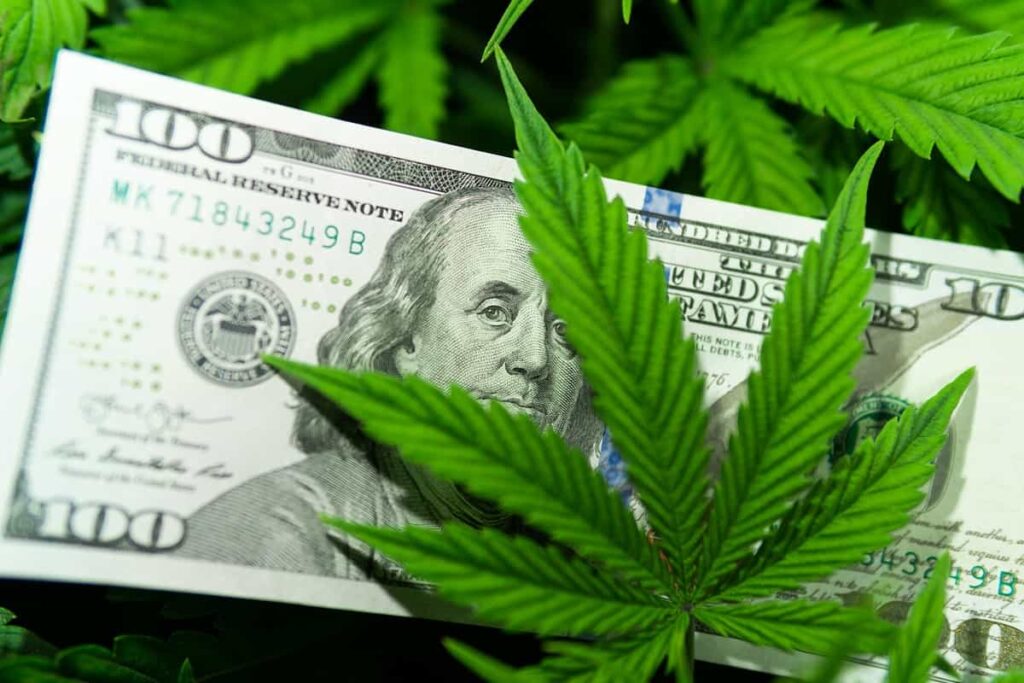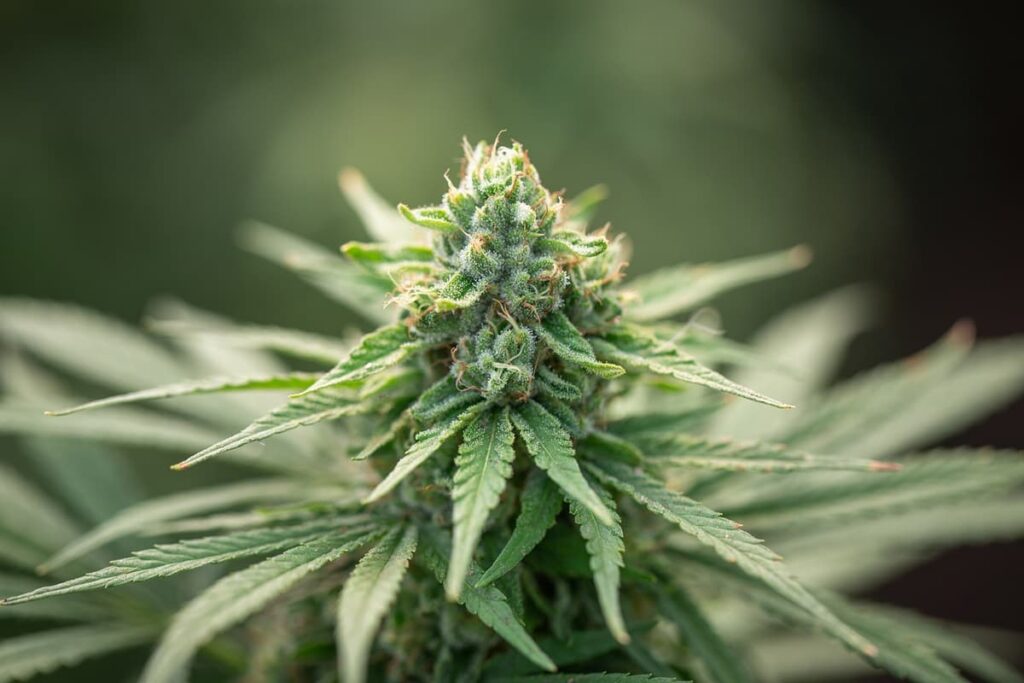GTI Stock vs Curaleaf Stock: And the Winner Is?
Table of contents

The Johari Window model is a psychological framework used to help people better understand how other people perceive them. You may think you know yourself, but you probably don’t. That’s your true self, and most people don’t really know their true selves. Maybe other people see that true self, or maybe you put on a fake persona, but are you really sure you know how other people perceive you? When you build an online media brand, you don’t have to worry about any of that. People will always tell you exactly how you’re being perceived, and that’s a good thing.
We recently started waving around a chart of the top-five multi-state operators, and it’s actually incorrect. Below, you can see the updated chart with the missing component highlighted in red.

We have been distilling our original list of 10 MSOs over the years and dropped Verano when it was supposed to be acquired by Harvest Health (a company that was since acquired by Trulieve). When the Harvest/Verano deal fell through in 2020, we missed it because we’re not always watching cannabis (the majority of our focus is on tech stocks). So now that we have an updated list of MSOs to choose from, we can try to find ones to invest in, given we think now might be a good time to invest in U.S. cannabis stocks.
Finding the “Best” Cannabis Stock
Finding the “best” cannabis stock would imply we’re able to pick stocks better than the 95% of active managers who fail to beat a benchmark over time. It would be easy to say “we think Trulieve is the best MSO” and leave it at that. But a better way to phrase this might be “Trulieve is an MSO we wouldn’t mind holding for some risky exposure to cannabis,” and now we need to see if any other MSOs are compelling enough to place alongside Trulieve. By doing so, we would cut our Trulieve company-specific risk in half.
Given our recent piece on size and risk in tech stocks, we’re going to start by looking at the other two large MSOs on the list – Curaleaf (CURA.CN) and Green Thumb Industries (GTII.CN) which also trade on the over-the-counter market under the tickers CURLF and GTBIF respectively.
Curaleaf vs. GTI
By performing a comparison of these two companies using basic metrics, we can quickly shortlist the preferable stock and then examine it further on its own merits. When it comes to size, Curaleaf is about 20% bigger than Green Thumb Industries (GTI) by market cap, but that can easily change with volatility. Revenue growth over time is one of the most important metrics we look at. As with any disruptive theme we invest in, strong revenue growth is always a must-have.
Revenues and Losses
Here’s a look at the past 10 quarters of revenue growth for GTI and Curaleaf.

We’re simple people who like to use simple metrics. Revenue growth means a company is stealing market share away from the black market. If there’s $100 billion left to steal, we want to see revenues growing as fast as possible, so Curaleaf appears to have the advantage in this respect. But we also want a financial safety net that ensures these companies can survive an economic downturn. For that, we can turn to profitability. Here is the total income/loss for GTI and Curaleaf over the past four quarters which can act as a proxy for future capital needs.
- GTI: $75 million in profits
- Curaleaf: $117 million in losses
And then accumulated losses over the past four years:
- GTI: $53.6 million in losses
- Curaleaf: $182.6 million in losses
Losses mean a company is burning through money during times when cash has never been more readily available. That’s understandable. But if the golden teat of funding dries up, profitable companies will be preferable to hold. Since we’re risk-averse investors who believe the 10-year bull market may end someday, we prefer cannabis stocks that aren’t hemorrhaging $100 million a year. This is a good segue into talking about another basic metric to watch – stuff being acquired that can’t be valued.
Goodwill and Intangibles
The High Price of Cannabis Stock Acquisitions was the title of a piece we wrote several years ago in which we criticized GTI’s General and Administrative expense breakdown which read like something out of the dot-bomb days. Purse strings were also loose when it came to acquisitions, and GTI had over $580 million in “goodwill” on their balance sheet. (Goodwill reflects the intangibles that are acquired during an acquisition which is often stuff M&A people pull out of their asses to get deals closed.) That number has since risen to $597 million, and all the money doled out for intangibles needs to come from somewhere.
Goodwill is what bean counters refer to as an “intangible asset.” These are defined as follows:
An intangible asset is a non-physical asset that has a multi-period useful life. Examples of intangible assets are patents, copyrights, customer lists, literary works, trademarks, and broadcast rights.
Credit: AccountingTools.com
Can anyone guess what an intangible asset might be in the cannabis industry aside from goodwill? Yes little Johnny, that’s right. Licenses to operate are considered an intangible asset that many companies overpaid to acquire in the cannabis boom times. So, one metric to monitor for cannabis companies would be “Goodwill and Intangible Assets.” The bigger this number is, the more shareholder capital was spent on something that can’t be valued. Consequently, the smaller the number, the better.

Both companies have spent – and continue to spend – a great deal of money on things that cannot be valued. And they’ve taken on a great deal of debt to do so.
Current vs. Non-Current Liabilities
We always hate to use accounting lingo, but bear with us here. This is really quite simple, and very important to understand when it comes to evaluating the merits of cannabis companies.
Current liabilities are a company’s debts or obligations that are due to be paid to creditors within one year. When evaluating the creditworthiness of a company, short-term debt obligation like “current liabilities” would be set aside in favor of looking at long-term debt. In the case of cannabis companies, we think all liabilities need to be considered. For example, Curaleaf has over $335 million due in the next year, a number that’s grown by 50% over the past year.

Consequently, we would propose that cannabis companies should be evaluated on both current and non-current liabilities. We can then compare this number to cash-on-hand for a very intuitive picture of just how bad the debt load is.
GTI: Debt Load and Cash
Right now, GTI has $165 million listed under “Current Liabilities” which reflects “obligations listed on the balance sheet due in less than a year.” (That’s about half of what Curaleaf has.) The remainder of their debt obligations – what we might call long-term debt – amounts to about $540 million. GTI needs to pay interest on their long-term debt which amounted to $7.6 million in interest expenses for Q3-2021. The ability for a company to cover their interest expense is taken into consideration by creditors, and GTI has no problems there considering that after all was done and dusted, they had $20.2 million in profits that quarter.
All of GTI’s liabilities are offset by $285 million in cash, a number that may have decreased a few days ago when GTI announced the acquisition of LeafLine Industries. The transaction – for an undisclosed amount – includes one of only two vertical licenses in Minnesota, including an operating cultivation facility and five open retail locations. That means GTI has about 67 open dispensaries operating across 24 States in America with 116 licenses in total.

With 17 M&A transactions over the past six years, GTI appears to be managing their debt load appropriately with a focus on profitability. Then, there’s Curaleaf, a company that’s growing faster along with their debt.
Curaleaf: Debt Load and Cash
Curaleaf’s latest earnings report talks about a “strong balance sheet” with around $317 million in cash, but it’s the next bullet point on the slide we’re concerned about.

Most companies just tell shareholders they refinanced debt, but in the cannabis industry, getting financing is a whole lot tougher because it involves an illegal drug. That’s why Trulieve was so stoked they landed $350 million at 8%.
When Curaleaf talks about “the cost of debt,” that refers to the interest they need to pay to service their debt. Last quarter, that was about $25 million – over 3X as much as GTI paid in the same quarter. Bringing down the cost of debt will decrease losses for Curaleaf, but it’s still debt they have to pay.
In addition to the aforementioned $335 million in current liabilities Curaleaf has on their balance sheet, they also have just over a billion dollars’ worth of long-term liabilities, about a third of which – $303 million worth – is listed as “deferred tax liability” which represents money they’ve set aside to pay taxes. Our American readers know what happens when you don’t pay your taxes. The IRS will level fines against your outstanding tax bill, and it is always in your best interest to not be in the tax man’s pocket. Curaleaf’s latest earnings report makes mention of a “year-to-date accrual for late tax payments” which means setting aside money for taxes makes a whole lot of sense.
A few weeks ago, Curaleaf announced the largest cannabis financing deal to date securing $425 million at 8% which we can assume is the debt refinancing they made mention of in the last earnings report. Regarding the “deferred tax liability,” that strategy allows for the company to generate some interest on their money while waiting until the last possible moment to give the tax man his dues.
GTI vs. Curaleaf: The Winner Is?
A simple way to compare the financial stability of cannabis companies might be to take all the money they owe people, subtract cash they have on hand, then see what that final number looks like. Here’s how GTI compares to Curaleaf with Trulieve thrown in for good measure.

We added Trulieve only to make a point. Of the three biggest MSOs, they’re in the best position based on the metrics we talked about today. Between Curaleaf and GTI, we would say that the latter is in a much better position. No, it’s not because they’re committed to “Social Justice” and DEI, the latter which actually erodes shareholder value. It’s because they’ve been achieving profitability without overextending themselves too much on the debt side. Even if they paid through the teeth for all those “intangibles,” they’re still able to operate a profitable business which is growing at a decent clip.
Conclusion
You can argue that cannabis companies are trading at rock-bottom valuations, and that may be the case. You can also argue they have much further to fall given so much shareholder capital was thrown at acquiring intangibles during the expansion frenzy that accompanied the cannabis bubble that we avoided like the plague.
Now that the dust has settled, we want to invest in those cannabis companies that are in the strongest financial position to weather an economic downturn. Based on the simple analysis performed today, we believe that GTI is in a better position than Curaleaf to weather a bear market.
Sign up to our newsletter to get more of our great research delivered straight to your inbox!
Nanalyze Weekly includes useful insights written by our team of underpaid MBAs, research on new disruptive technology stocks flying under the radar, and summaries of our recent research. Always 100% free.















Green Thumb Industries – GTBIF:
Market cap: $5.1B
Q3 revenue: $234M, annualized: $936
Q3 net income: $20.2M
P/S ratio: 5.4
—-
For comparison Cresco Labs has P/S ratio 2.2, but it makes a loss.
GTI certainly seems like the lessor of two evils from where we’re sitting. We have a deep-dive on GTI pending so stay tuned.
I just have read your analogy of Jan 23/2023 .
I wonder as to what has changed since you published it a year ago
Nevertheless thank you
We often have different analysts doing updates. In this case, the latest update was by a new analyst, so old piece was covered by someone else, making a “what’s happened since” update kind of tough 😉